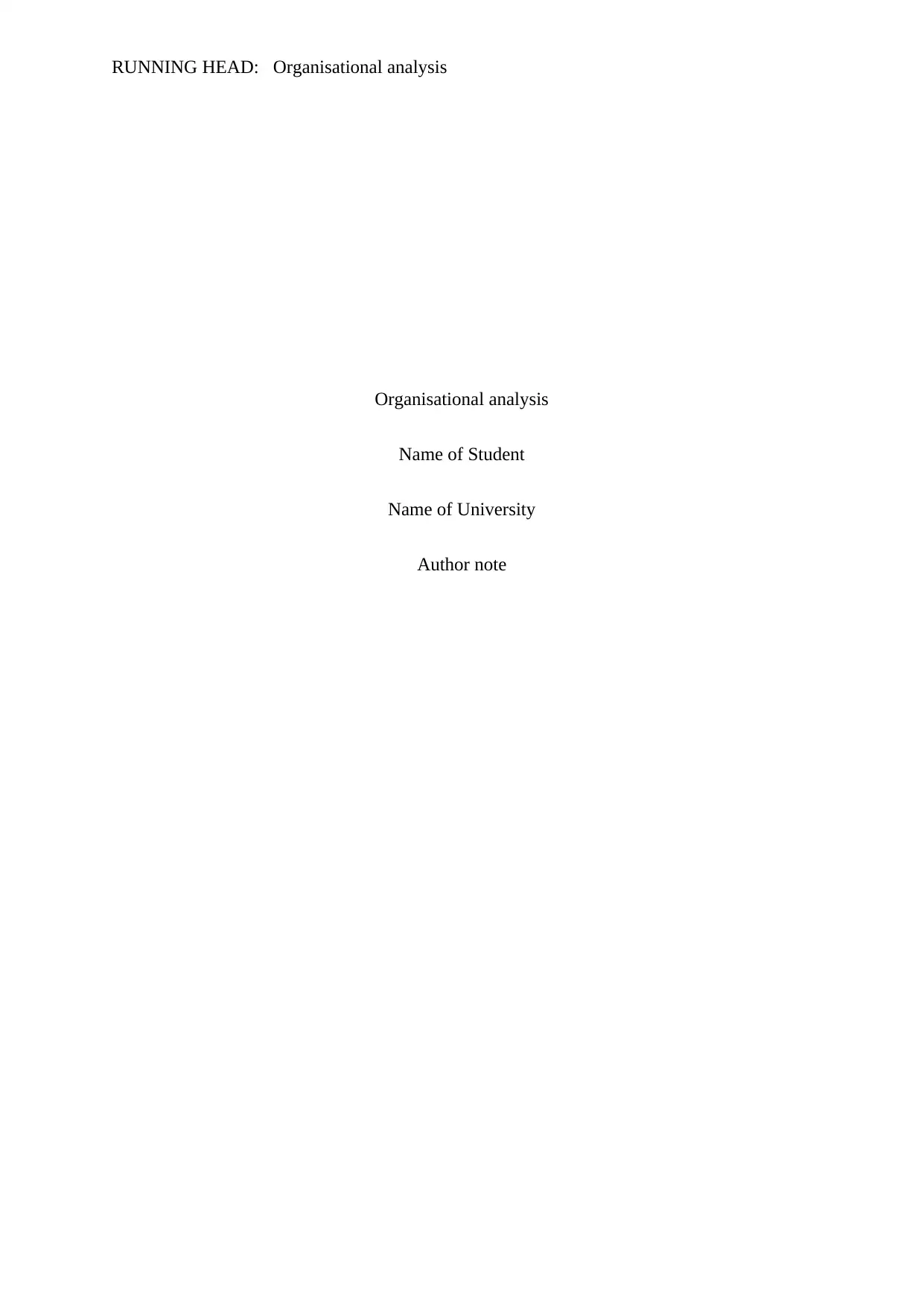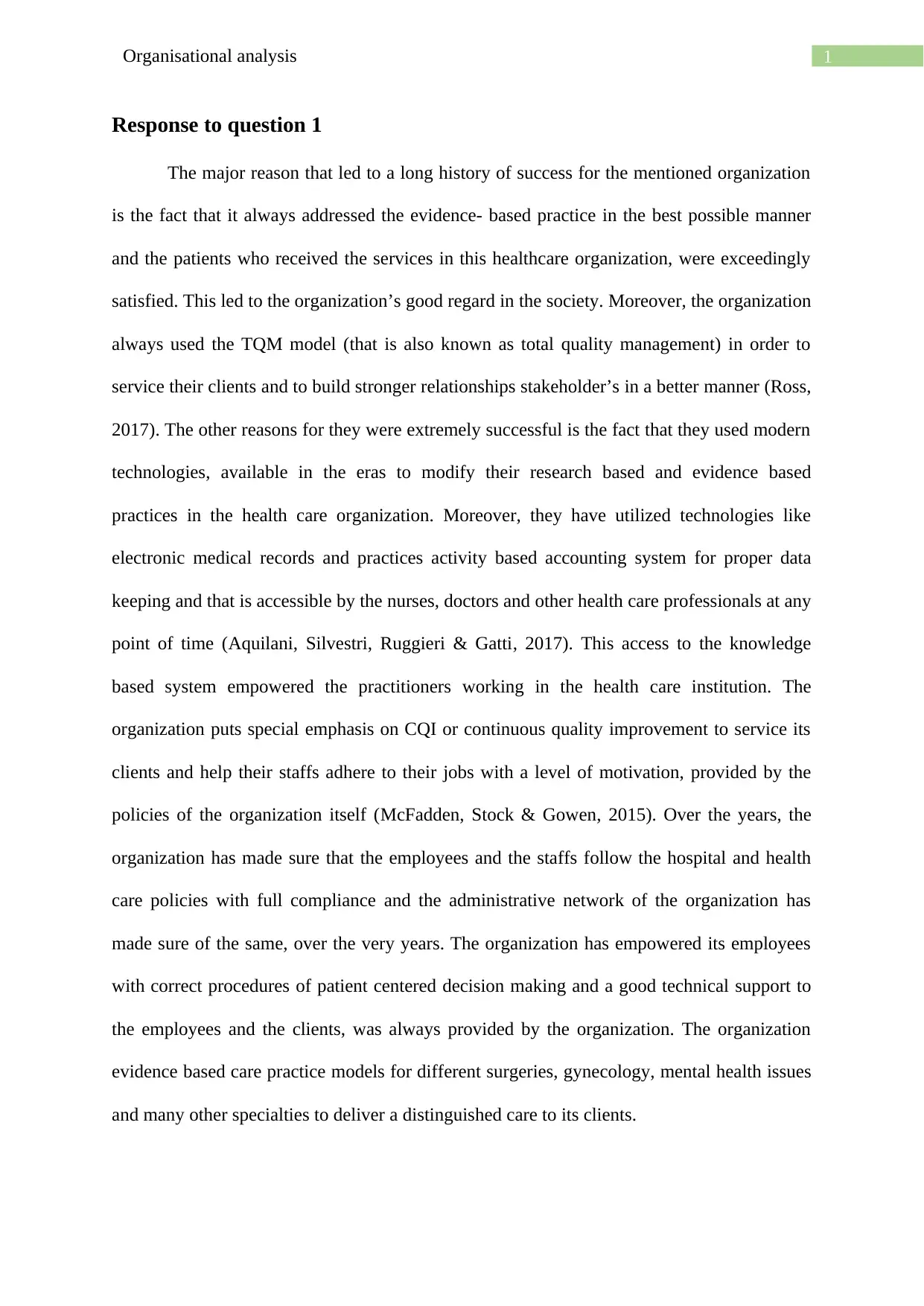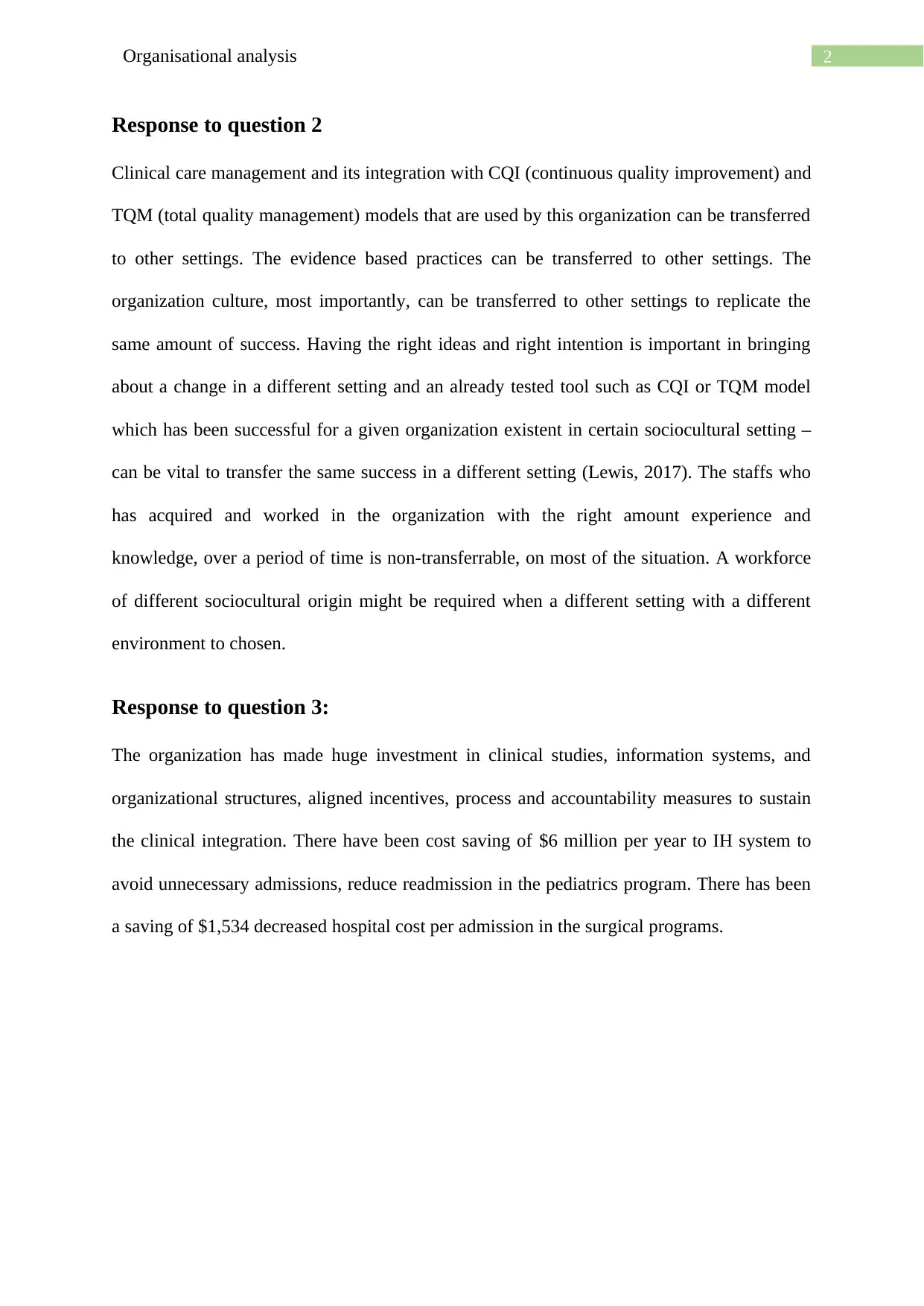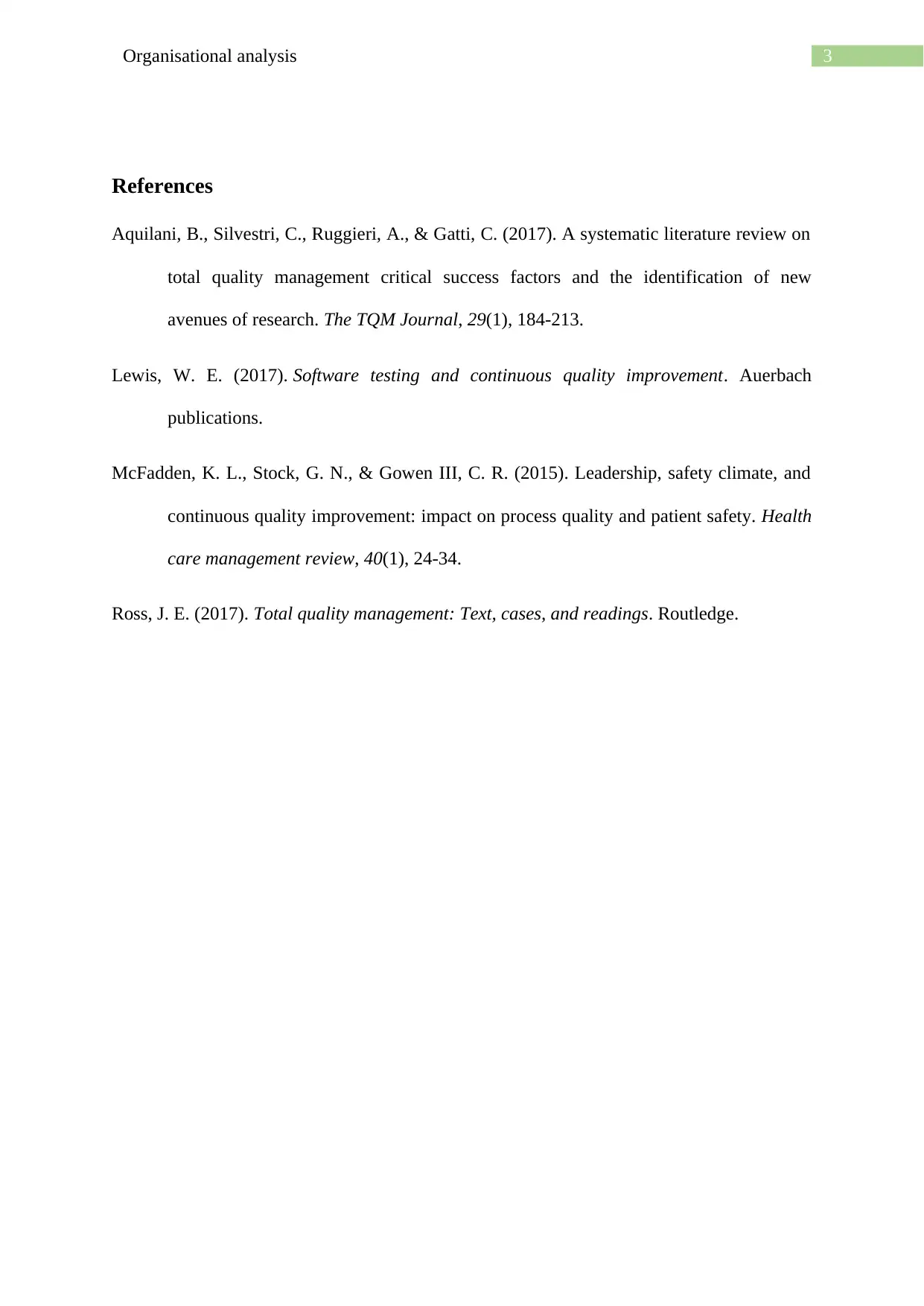Organisational Analysis of Intermountain Healthcare: A Case Study
VerifiedAdded on 2022/11/16
|4
|788
|81
Case Study
AI Summary
This case study analyses Intermountain Healthcare's success, focusing on its evidence-based practices, TQM and CQI models. The analysis highlights the key reasons for the organization's success, including its patient-centered approach, use of modern technologies like electronic medical records, and a strong emphasis on continuous quality improvement. The study also discusses the transferability of the organization's clinical care management and cultural aspects to other settings, emphasizing the importance of adapting strategies to different sociocultural contexts. Furthermore, it details the investments made in clinical studies, information systems, and organizational structures to sustain clinical integration and achieve significant cost savings and improved outcomes. The author of this case study has provided a detailed analysis of the case, referencing key literature to support the arguments presented.
1 out of 4










![[object Object]](/_next/static/media/star-bottom.7253800d.svg)